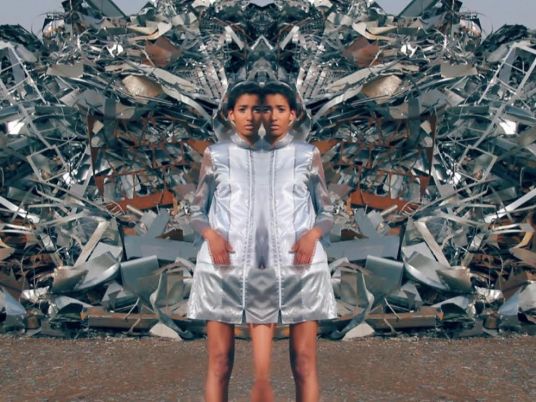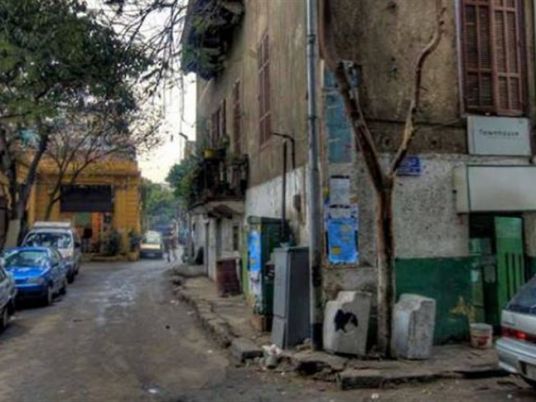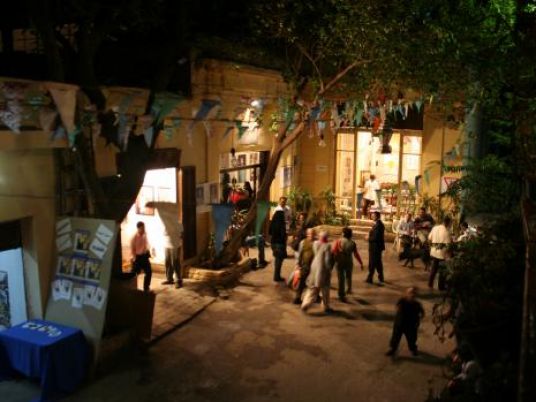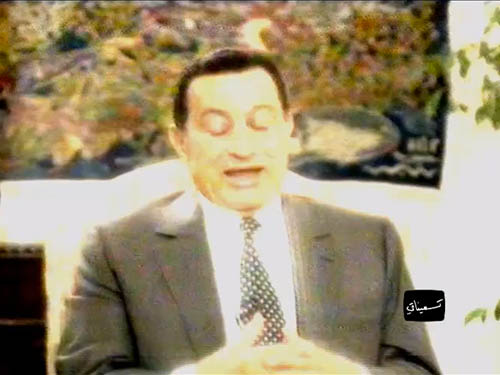The Force Majeure performances are meant to engage rather than distract; this was co-curator Adham Hafez’s comment on the show to Al-Masry Al-Youm in a previous interview. Engaging they are, yet in the most unconventional ways, playing on the emotional sensibility of the audience rather than offering a clear narrative.
For the performance, architect Samir Kordy redesigned the Townhouse gallery’s factory space into smaller rectangular spaces partitioned by colorfully-patterned blankets. Audience members are invited to sit on blankets and large black cushions until being forced to move around the space as the performances unfold and the dancers, who are sitting casually among the audience, get up to do their act.
The performances begin with a monologue by Hafez. Dressed in a black galabeya, he wanders around the space introducing himself as the “Other” – the meaning of otherness being the underlying theme of the ten performances and video projections by artists from five cities across the Mediterranean.
As the lights dim, people reposition themselves as typical spectators and watch an acrobatic performance by a young woman who, for 20 minutes, flips back and forth doing occasional cartwheels, while a dim video projection plays in the background. She suddenly stops and as audiences await the next performance, young men and women rise from among the audience and start shoving one another with the cushions and throwing them aside occasionally hitting the wall. For a few seconds, it is unclear whether this is part of the performance or a strange reaction to the previous one. The dancers pull the blankets from beneath the audience and then start heading back towards a "grassy" area of astroturf. An older man appears and spraypaints on the wall: “REVO EVOLU TION JOY.” The setup seems like a representation of Eden and the atmosphere is serene – the only words articulated being “revolution” and “joy,” shifting a mood of conflict into a peaceful one, with the dancers wandering around smiling and relaxing on the grass.
But the conflict resolution is only temporary; the second part of the show focuses on struggle. Audiences are asked to move past the third partition of blankets, where a woman leans against a wall, her head on the ground and her legs pushing the wall to lift her body up slowly. She suddenly gets up and sits among the audience.
A few minutes later, she starts again. This time however, she bends down on her knees and hands. She moves her muscles to slowly reveal the intricacies of the human body in a hypnotizing manner. At this moment, the body manifests itself as a site for action and, in this particular case, struggle. She returns to her seat only to get up again after releasing her curly red hair from a bun to cover her face. She suddenly segues into a fit of fast and intense movements, shaking her whole body. When she returns to her seat this time, her face looks different. Her eyes are red and tearful.
Some of the dancers sitting among us gradually moved towards the grass. They start the shoving again, especially a young man who they push to the ground, cover with grass patches and drag by his feet across the space. Across from him, two women and a man sit on the grass eating fruit and offering to share with the audience.
The women break off and walk up to the man lying on the ground face down. As he tries to get up, they sit on his back eating strawberries, peaches and grapes. Soon, they get bored and leave. He curls his body like a cheetah, and then starts wandering through the space looking around in a predatory manner, forcing the audience to move out of his way.
Back on the grass plain lie two men, one embracing the other and confessing how bad he feels. “I wish I was there for them, to help and support…. Now I feel as bad as they did before the revolution.”
“I don’t get it,” was a recurring response among the audience, but perhaps one young man described it best: “We are not here to understand but to engage emotionally with the events.”




